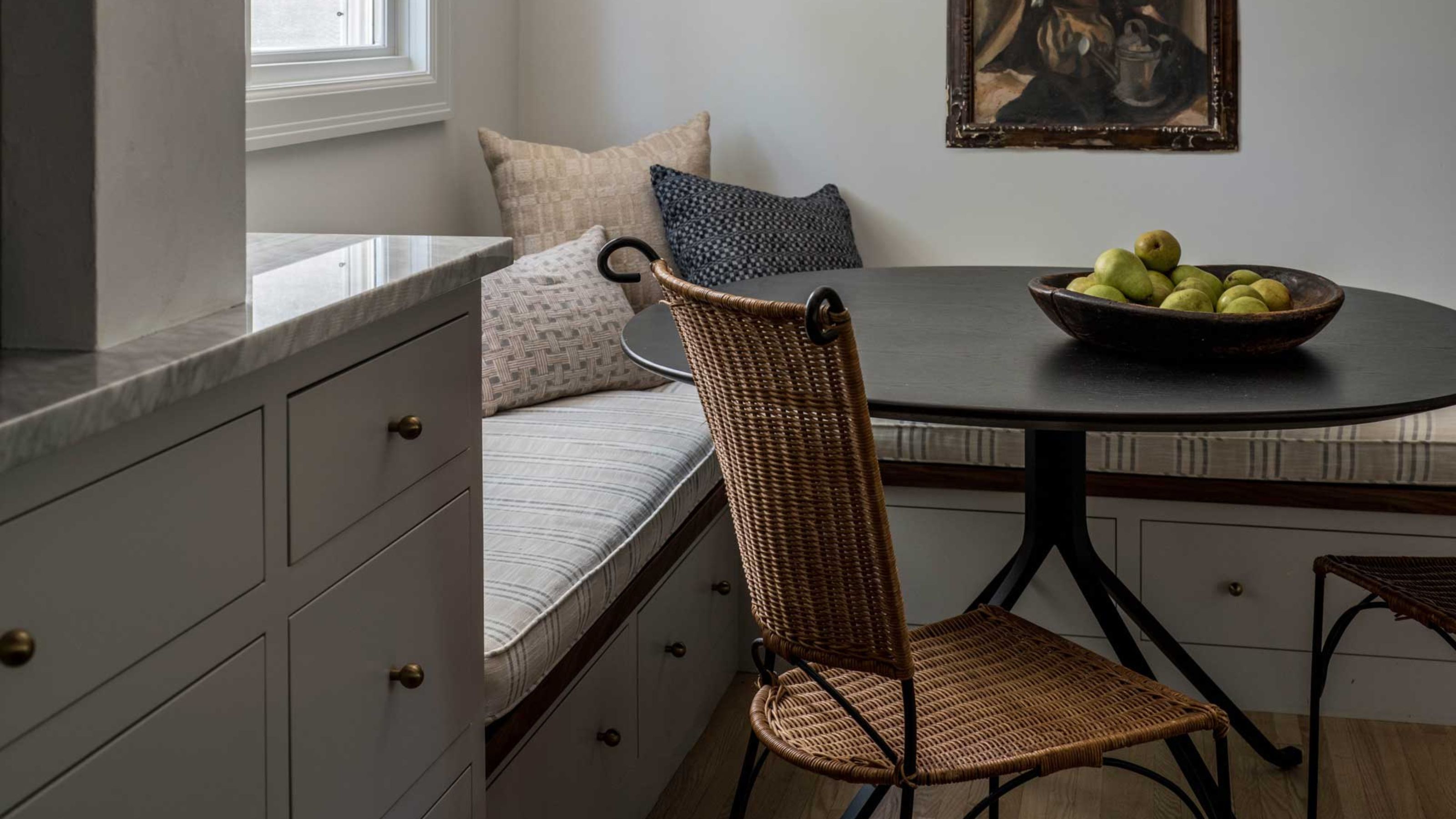
All dining rooms, no matter what their size, need certain pieces of furniture in order to fulfil their role properly. If you are working with a dining space that sits on the smaller side of the scale, you are going to need to plan the room with extra care, and that's what our guide is here to help with.
To successfully design the space, you're going to need to find the balance between maximizing the room you have, while ensuring it still looks good and feels comfortable to sit in. "In a small dining room, functionality and flow are key," says Linda Hayslett of LH.Designs.
With this in mind, we asked a range of design experts for their views on the features that all small dining room ideas should have in order to for them to feel spacious, clutter free and, most importantly, relaxing. Here's what they said.
1. Rethink Rectangular Dining Tables
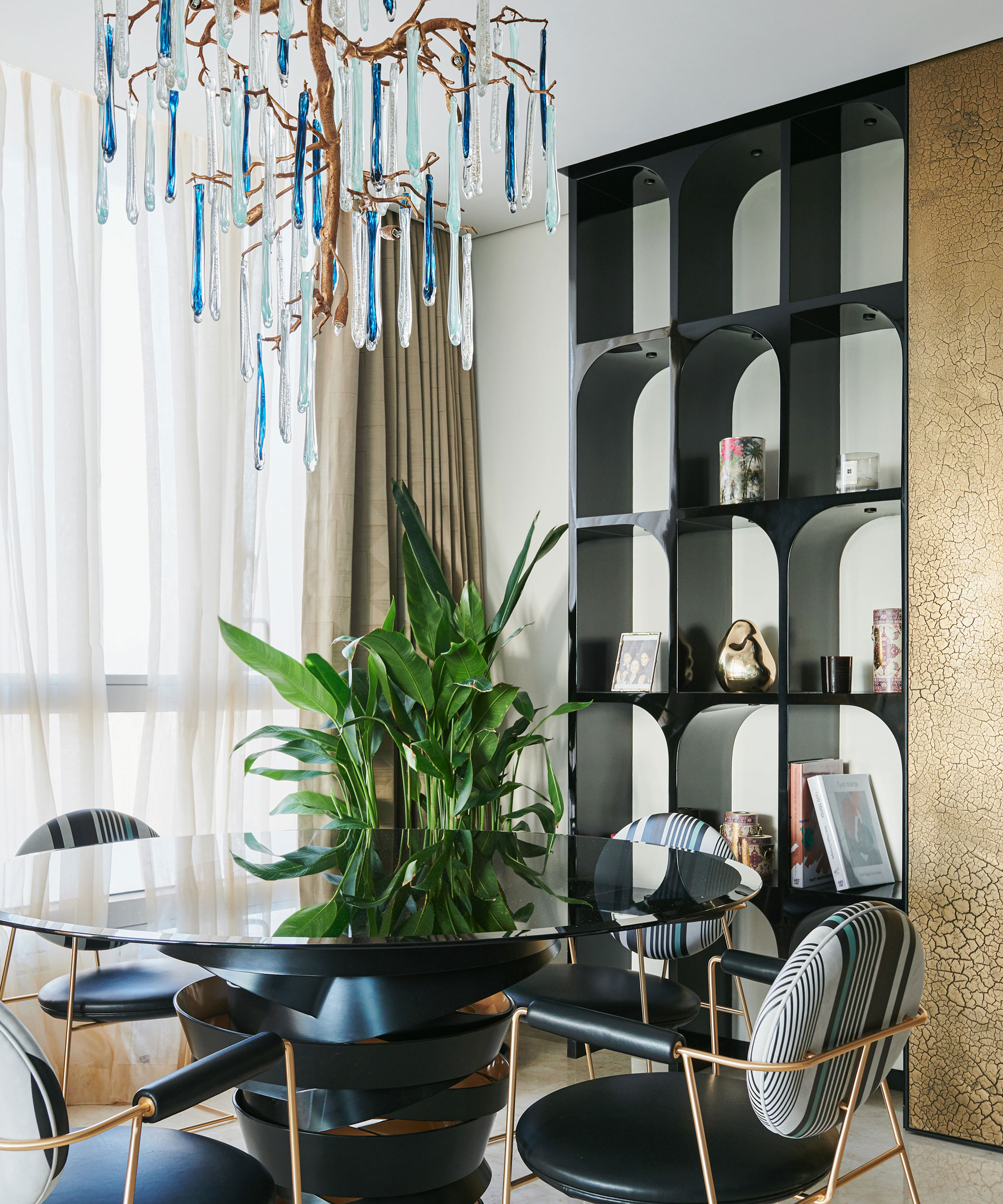
Obviously a dining table is a non-negotiable in a dining room, but in small spaces it's best to look beyond the standard rectangular or square shapes in order to make the most of the space, especially if you're trying to squeeze a dining table in a small living room.
"Start with a round or oval dining table to maximize space — these shapes are easier to navigate around in tighter areas," says Linda Hayslett of LH.Designs.
"Round, oval or racetrack shaped tables often work best for a small dining room layout, since they have a smaller footprint and soft edges," adds Molly Torres Portnof of DATE Interiors.
It's also worth bearing in mind that placing your chosen table centrally might not be the best approach. "Small rectangular dining rooms often don't leave much space aside from a table. Maximize space by utilizing the corners," suggests Jeanne Barber of Camden Grace Interiors. "We often do this by incorporating round tables in corners, which also softens the hard right angle. These round tables can double as serving space or a bar set up, so your main table stays clutter free."
Shape aside, it's also worth considering a dining table that can adapt depending on your needs. "If possible, opt for an extendable table to accommodate extra guests without taking up too much room day-to-day," advises Linda Hayslett.
2. Invest in Multifunctional Furniture
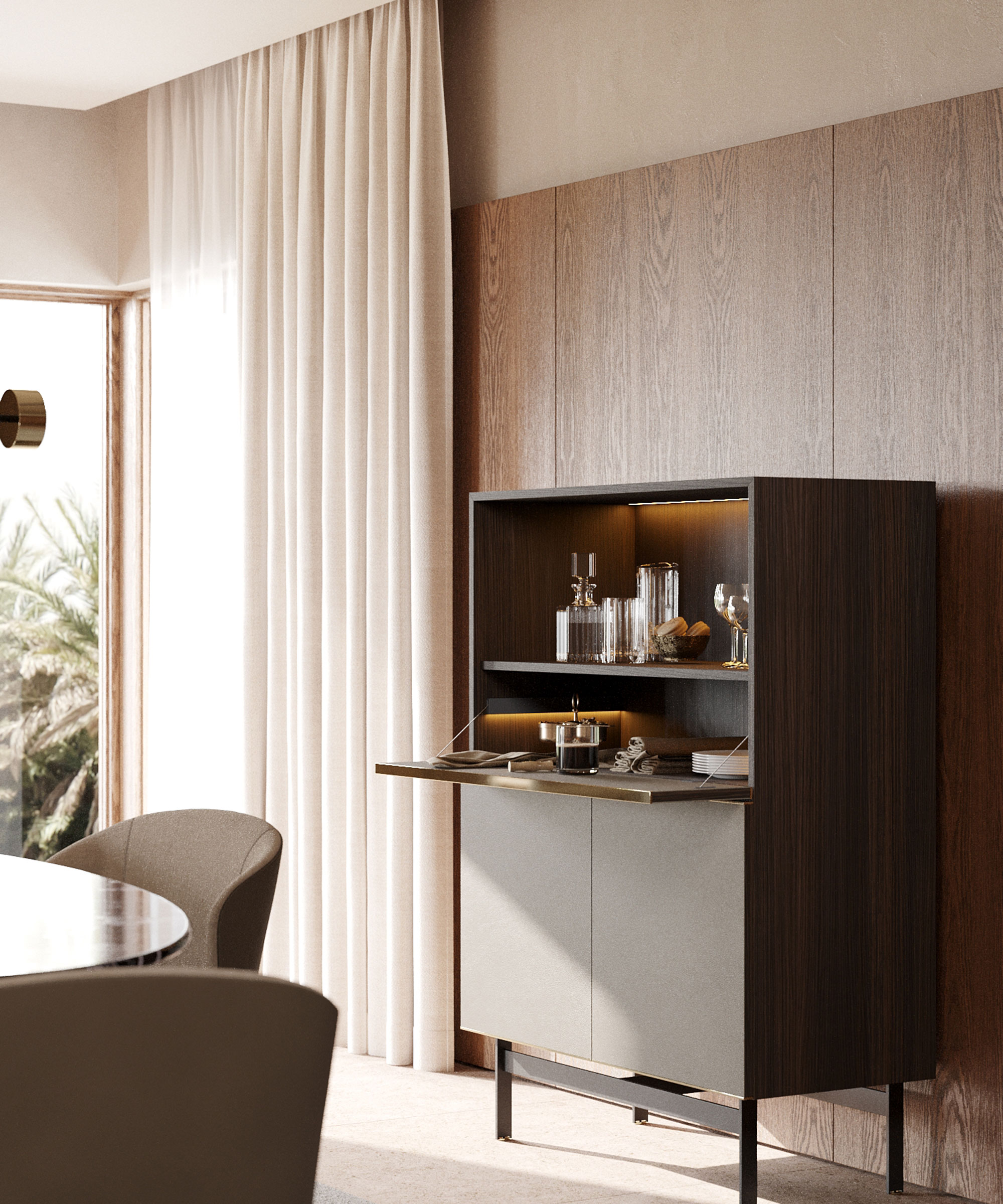
In any small space, it makes so much sense to seek out well-designed furniture that offers more than one function. "A narrow sideboard or console along one wall can provide storage for dining necessities, while also doubling as a serving station when entertaining," says Linda Hayslett.
Try to exercise a little creativity here, too. Don't feel restricted to pieces designed specifically for the dining room, particularly if this is a room that also gets used for other purposes.
"Consider adding versatile pieces," suggests interior designer Alisia Sophia, founder of ASDS. "A sideboard or bar cart can be functional and provide storage. If your dining room also serves as a workspace, like mine does, the sideboard can provide storage to easily tuck away work materials too."
3. Make Space to Hang a Mirror or Two
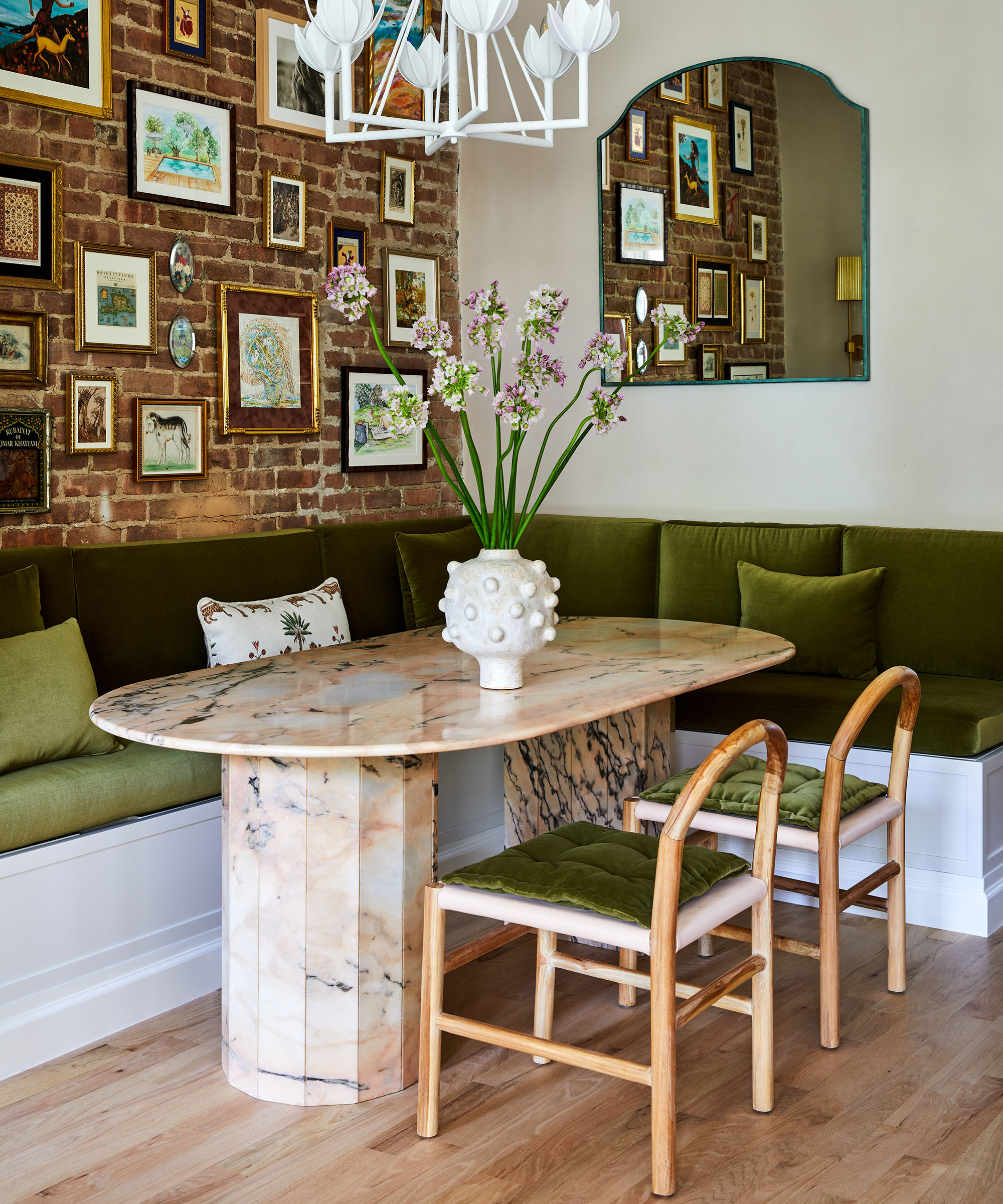
If you haven't yet discovered the hugely helpful role mirrors can have in visually expanding spaces, then now is time to get on board with this concept — particularly when it comes to working out how to make a small dining room look bigger.
"The old mirror trick works wonders to create the illusion of a larger space," says Jeanne Barber. "As a bonus, a mirror in the dining room also helps bounce romantic dinner light around the room."
Molly Torres Portnof agrees, saying she often incorporates mirrors in small dining rooms to help make them feel larger and more open. When it comes to strategically placing them, aim to position mirrors opposite a light source — natural or artificial — or consider hanging two mirrors facing one another across the room.
4. Keep Seating Options Slimline
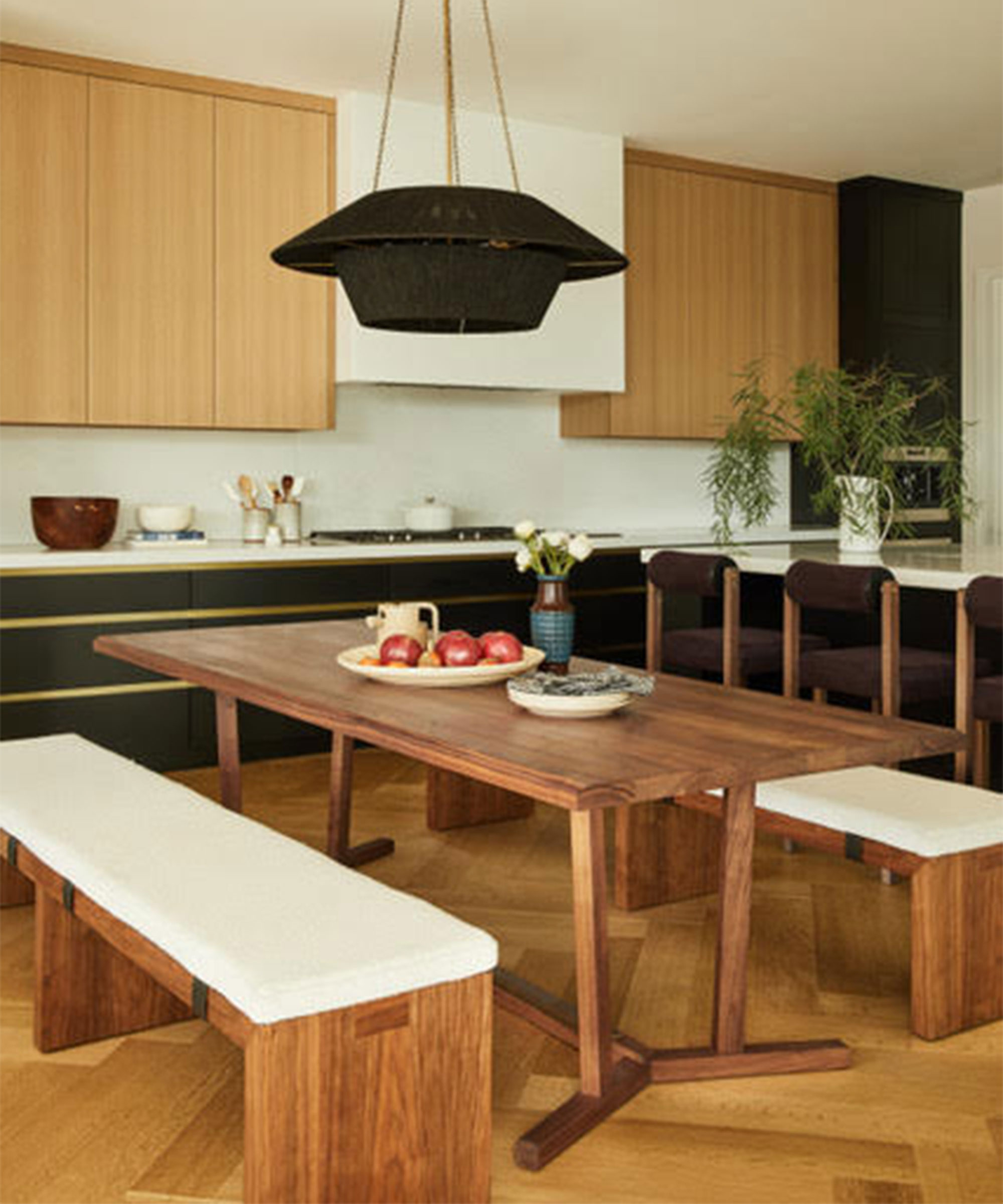
It should go without saying that all dining room ideas need seating — and that seating needs to both look the part, as well as provide a comfortable spot to sit and eat.
In small dining spaces, you need to look for chairs that are light-of-form, so seek out those with slim frames, and ones that can slide beneath the table almost entirely when not in use.
"To avoid overcrowding, it's important to balance functionality with openness," explains Lauren Lerner, CEO and founder of Living with Lolo. "Besides the dining table, add slim-profile chairs that tuck under the table to save space. For extra seating, use a bench on one side of the table that can be pushed in when not needed."
5. Use Walls for Storage
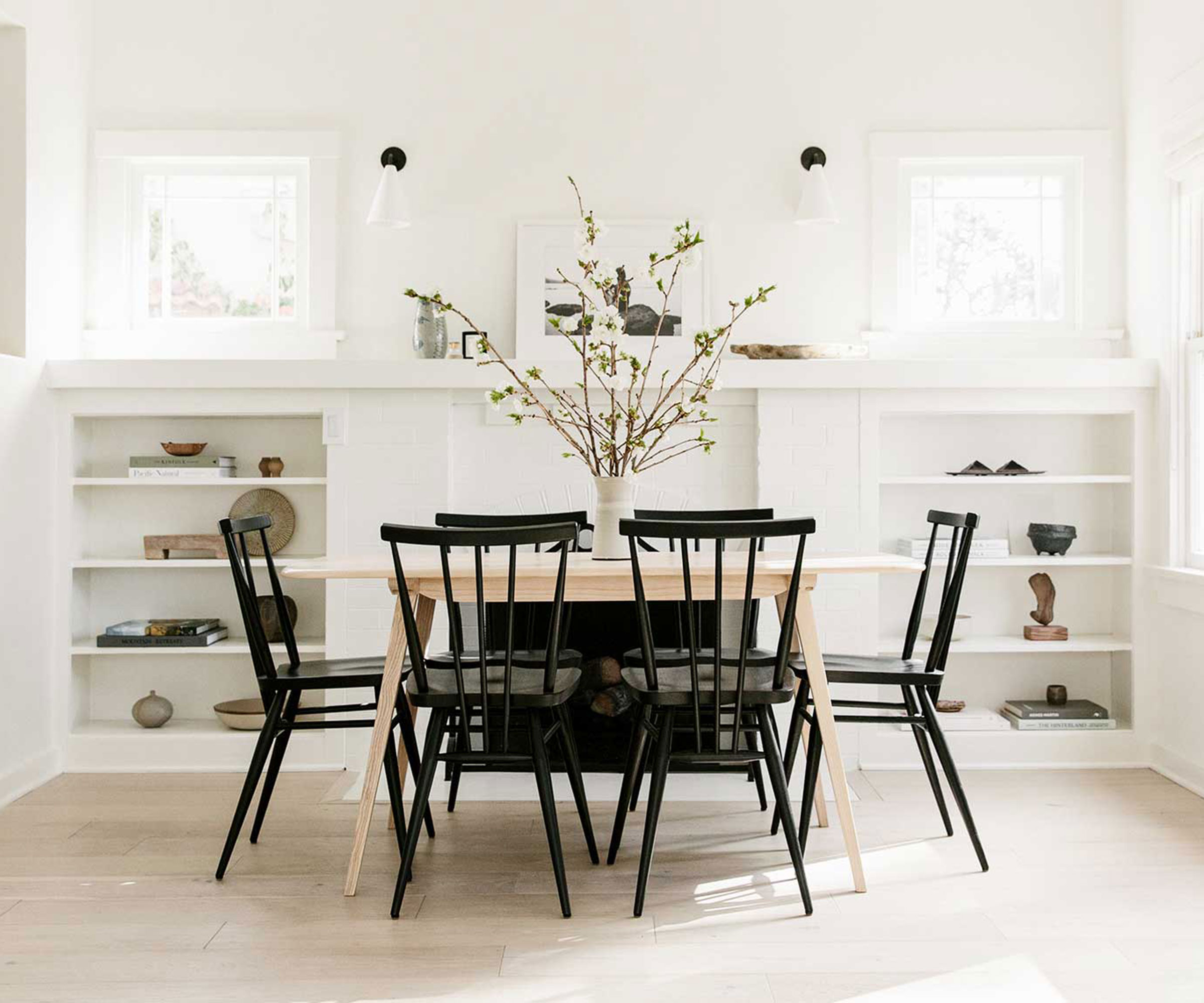
Walls are often a missed opportunity when it comes to storage ideas for small spaces, as they won't eat up valuable floor area. A lot of furniture can be fixed to walls and can be used not only to display your best dinnerware sets, but also for hiding away clutter.
"A wall-mounted or narrow buffet can provide storage without taking up much room," adds Lauren Lerner. "Choose pieces with clean lines and light colors to make the room feel spacious. Floating shelves are also great for displaying items or storing dishes without using floor space."
At the same time, you should also be thinking of how the height of the room can fulfil its potential. "Try to take advantage of vertical space by adding tall cabinets for additional storage without sacrificing floor area," suggests Alisia Sophia. "In addition, adding wall sconces or a standing lamp instead of table lamps gives the warmth and ambiance without taking up surface area."
6. Add Texture With Carefully Chosen Rugs
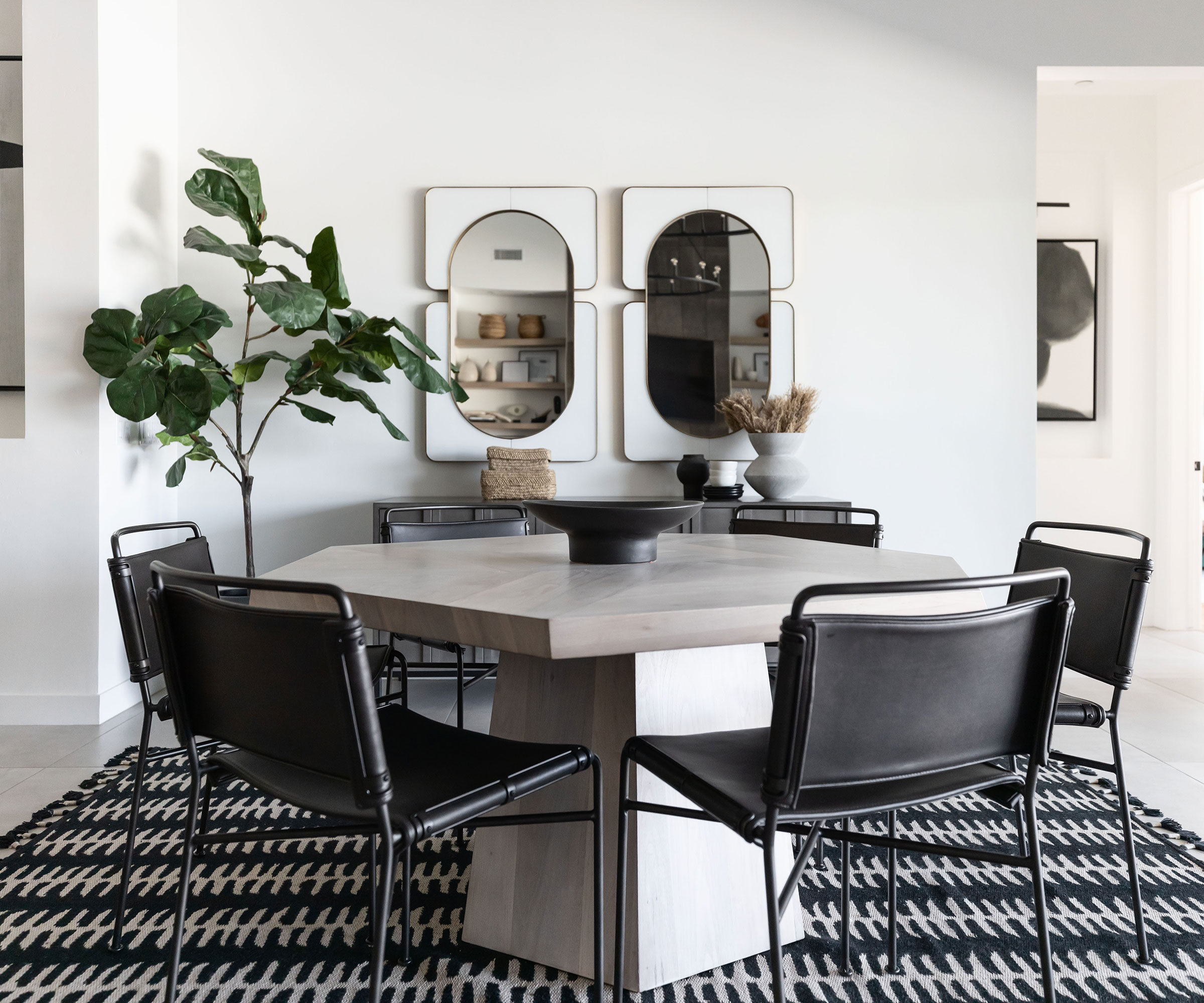
Never underestimate the power of soft furnishings and finishing flourishes when it comes to bringing comfort as well as a sense of space into a small dining room. It is these extra touches that actually add a new dimension and distract the eye from the proportions of the area.
"A soft rug underfoot or upholstered chairs will create depth and comfort without clutter," says Linda Hayslett.
And when it comes to knowing how to choose the right dining room rug, make sure to opt for one that is bigger than the dining table and try to select one that is easy to clean in the event of spills.
"Use a large rug to define the dining area, ensuring it fits the table and room size, grounding the space and adding warmth," suggests Lauren Lerner.
FAQs
What is the best layout for a small dining room?
Layout is absolutely key to the success of any small space, but when it comes to designing a dining room with compact proportions, it is more important than ever. Items need to be placed in a way that won't block any natural light and in an arrangement that facilitates flow, making the room easy to navigate.
"In terms of layout, place the table centrally in the room, with enough clearance (at least 36 inches) around it for movement," suggest Linda Hayslett. "If space is really tight, push one side of the table against the wall, which can create a cozy banquette-style dining area. Incorporating a bench on one side — instead of chairs — also saves space and adds versatility, as it can be tucked away when not in use."







